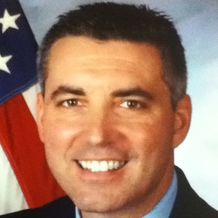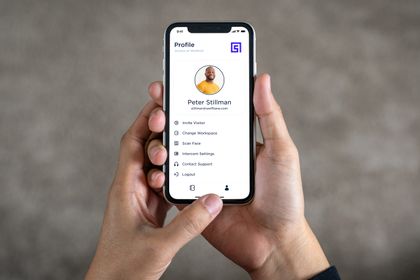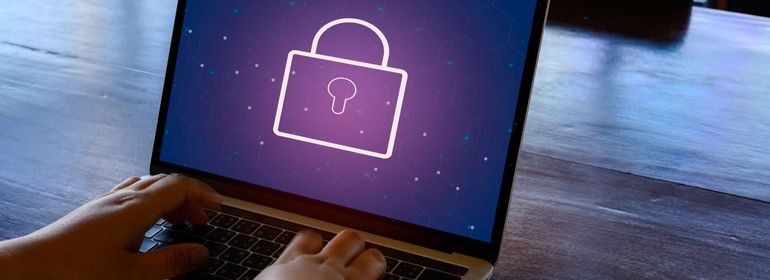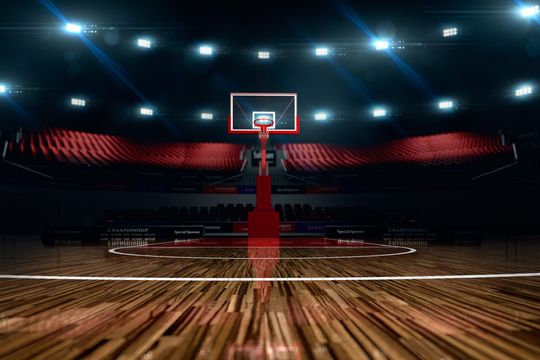James A. DeMeo has spent three decades in the security and sports industry, including 21 years in law enforcement. In 2012, he helped open the Barclays Center in Brooklyn, NY, a billion-dollar sports and entertainment complex that serves as the home of the NBA Nets. After that, he worked as a security supervisor at the Cedar Park Center-HEB Center in Austin, Texas and later opened Unified Sports and Entertainment Security Consulting-USESC, based in Raleigh, NC. He currently serves as a remote learning adjunct instructor teaching event security/facilities/risk assessment at Tulane University-School of Professional Advancement-SOPA and Mercer University’s Stetson-Hatcher School of Business and Economics. He is also the bestselling author of “What’s Your Plan? A Step-by-Step Guide to Keep Your Family Safe During Emergency Situations.”
What are the 5 biggest security issues that the sports industry is facing right now?
James DeMeo: First and foremost, COVID-19. It’s the worst infectious disease outbreak in 100 years. There are enormous health and safety implications for fans transitioning back into venues.
Number two is the threat of terrorism: domestic, international, and lone wolf.
Three, active assailant and the overall insider threat.
Four, a laundry list of inclement and severe weather, such as forest fires on the U.S. West Coast and hurricanes in the southeast.
Finally, the technological and cyber threats, such as ransomware, phishing, malware, attacks that could potentially take over a facilities infrastructure.
With COVID, it’s amazing that the U.S. sports industry and leagues have been having so much success after baseball got off to a rough start. The NBA and NHL bubbles have worked, MLB is back on track, and the NFL is doing well two weeks in (though on 29 September, the Tennessee Titans announced that 3 players and 5 staff had tested positive for COVID-19). Is this sustainable, given that college sports are also beginning, where there are more teams and athletes, and you’re dealing with kids?
We asked the same question back in March. Things look good now, but we may have a scenario within the next two or three months and everything we’re doing today will change drastically. A lot is hinging on the development of an approved CDC vaccine and distributing that vaccine as quickly and safely as possible. It’s been a Herculean task for sports entities, which are multimillion-dollar juggernauts.
What happens when fans return, and there are temperature and face mask checks, as well as security checks? That becomes another potential choke point or bottleneck that the bad actors will notice and try to exploit. We could be dealing with a Manchester scenario (bombing of the Ariana Grande concert in May 2017), where we have a bomb set off during egress or it could be a fire or a hurricane. And the exits are a choke point, too, with fans who have been drinking alcohol for hours causing congestion or having difficulty making their way out. These are the types of scenarios that keep venue owners awake at night. It’s all about mitigating risk and the overall fan experience. How you properly manage that is the challenge.
What about the social justice issues that are particularly big in the NFL and NBA right now? When fans come back, they are already likely to have pent-up emotion. Then you’re mixing people together who are inebriated and may have very different stands on social justice issues. Someone in a Trump shirt and someone with a Black Lives Matter cap exchange words and you have a powder keg go off.
Again, these are very, very important conversations to have. This could present a combustible scenario. It’s the worst of all storms. The worst infectious disease outbreak in a hundred years, a contentious political cycle, wildfires in the west, geopolitical divisiveness, macroeconomic crises both domestic and international.
And the NBA has decided to use 20-plus venues for polling centers. We have to be cognizant of the insider threat. We have to understand the political climate of the venue that we’re safeguarding, whether it’s Detroit, New York, San Francisco, or Atlanta. We have to know the vibe of our cities.
We have to make sure that we’re continuously educating. An educated fan is a safe fan. We must break things down systematically, learn our lessons, and share information in a timely manner. It’s really about understanding and empathy, whether by the venue manager and staff, police officers at the venue, or federal our government partners.
It’s a fascinating point about the insider threat at NBA arenas that are polling centers. Will they get the same security as a National Special Security Event? The Super Bowl is one city; we’re talking almost two dozen NBA cities.
The whole world is going to look at what we’re doing over the next 40 to 45 days. There’s not a single NBA owner that wants to be known for all the wrong reasons. It’s not just someone planting a bomb, but a drone dispersing a radiological or chemical agent, or a false anthrax scenario using baby powder, which could cause mass hysteria. Nobody wants to be the venue that’s known for cutting corners. You don’t want to face litigation six months down the road trying to explain why you cut corners. It just doesn’t make sense on so many levels. Ensuring business continuity is key.
Look at the whole sports industry. There’s just too much money in terms of marketing and TV rights. Teams want to recover these revenues, but they don’t want to cut corners.
We can’t let our guard down. We have to train proactively and conduct thorough risk assessments looking for threats, gaps and vulnerabilities.It’s a top down, bottom up, inside out approach. Maintaining a robust security posture utilizing such risk mitigation strategies as CPTED-Crime Prevention Through Environmental Design and Enterprise Risk Management-ERM bodes well for venue ownership groups. It’s just good business.
Another critical issue, which you referred to with the Ariana Grande concert, is that arenas and stadiums are used for other events, maybe even more than they are used for games.
Exactly. Consider Barclay Center as an example. When I was with AEG, the first eight nights we had Jay-Z and Beyonce. That’s one demographic of patrons. Shortly thereafter, Barbara Streisand came in and brought a completely different demographic.
It’s critical that people who are entrusted with safeguarding these spaces understand the demographics of the patrons who are coming to the venues. And they need to train proactively. Guest services, security, the front line staff to today’s venues have to know how to verbally deescalate tense situations, look for erratic signs/behaviors.
We are used to bomb threats being called in to public gathering spaces, and we have protocols for that. But what happens when people start calling in COVID threats? Mask enforcement and ventilation only go so far.
I would imagine that venue security is working on this type of scenario to address what you just described. We can limit capacity, continuously clean surfaces, etc. but a determined person can look to defeat that. It’s definitely a game changer. Add to that, police presence might not be so welcome in some arenas or stadiums, and some police might not be volunteering to work NFL games because of their personal feelings.
Watching the NFL opener, there were about 17,000 fans socially distanced in the stadium. Should security be enforcing social distancing? Should event staff? You see what’s happening in retail stores, with staff getting attacked when they try to enforce mask and distancing rules.
Again, it’s all about education. An educated fan is a safer fan, so it’s incumbent upon sports entities to post information on their websites and multiple social media platforms. So the fans understand what the accepted, tolerated behaviors are before they come out to the venues. This starts with the venue’s Code of Conduct.
Also, real-time intelligence gathering and analysis is very important. We cannot afford as a society to miss signs anymore. We have to look for those early attack indicators to violence, such as by employees. But the key, I believe, is that we can no longer work in silos, be it cyber, HR, legal, compliance, event security, stadium security, business continuity, marketing, etc. We have to be unified and train together and understand each other’s respective roles and needs. We all have to speak the same language in the interest of public safety.
What about occupancy and space-planning technology, such as giving spectators smart cards, or having them download apps, that can track for social distancing and allow event management to alleviate crowding by adding staff to snack bars or opening new restrooms?
The technology is available, it’s just a question about how and when to integrate it. It’s about finding that balance between keeping fans safe, but also protecting sensitive data/personal information. The solution could be an app—see something, say something—or an anonymous text service to say, there’s something out of the ordinary, there’s an intoxicated fan causing trouble in Section 101. Two-way communication is key. The fans have a vested interest as well. It’s their game day experience. We want to make them feel as safe and secure as possible without being overbearing and creating a police state. It’s a delicate balance for sure.
Swiftlane is working on touchless access control so people can avoid touching common surfaces. How do you think technology like face recognition-based touchless access or mobile access will change the way security works for players, staff, and fans?
It’s all about keeping everyone safe and secure, and any time technologies can be used responsibly to that end, that’s great. Touchless technologies create intrinsic value for ownership groups in terms of duty of care and OSHA. It’s an added layer of protection that lets fans know that ownership is preventing the spread of infectious disease.
Have there been applications of face recognition or other biometrics for access within the sports industry, and what challenges have been present?
Biometrics has entered the space. Fast pass lanes, virtual queuing has entered the vertical. Technology can make monumental impact in terms of safety and security safeguarding today’s stadium, venues, and arenas.
What’s the near future look like for live sports and security?
Last weekend I watched the NFL and while I have my personal feelings, I felt good that the players were back on the field. It made me feel that we’re starting to get back to some sense of normalcy, and I think that’s going to give us the confidence to get through this pandemic. And I think there will be a financial windfall from this because that will bring people back to work, taking tickets, selling hot dogs. The entertainment, hospitality, and tourism industries sure do need a boost. Fans need to get back into venues safely. Now is the time.
That’s where, as a nation, we’re going to heal, because of sports and entertainment. It’s going to unite us for the common good. And that’s how we’re going to get past all the challenges that we’ve had recently.





